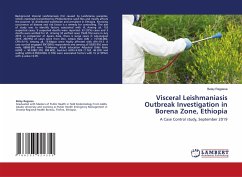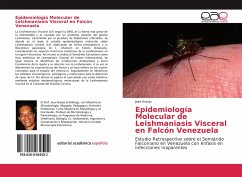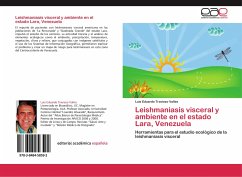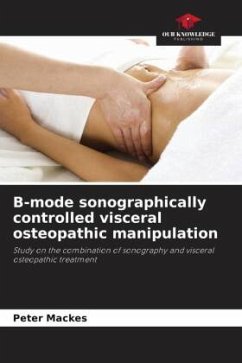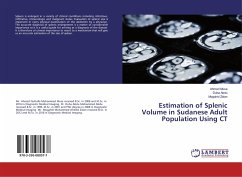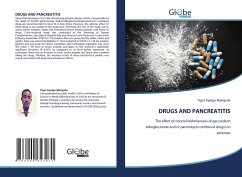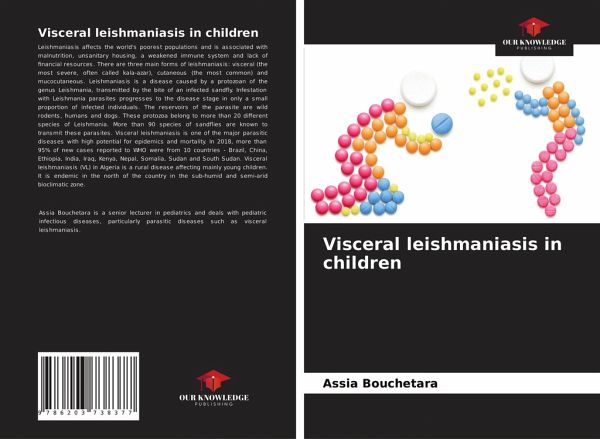
Visceral leishmaniasis in children
Versandkostenfrei!
Versandfertig in 6-10 Tagen
27,99 €
inkl. MwSt.

PAYBACK Punkte
14 °P sammeln!
Leishmaniasis affects the world's poorest populations and is associated with malnutrition, unsanitary housing, a weakened immune system and lack of financial resources. There are three main forms of leishmaniasis: visceral (the most severe, often called kala-azar), cutaneous (the most common) and mucocutaneous. Leishmaniasis is a disease caused by a protozoan of the genus Leishmania, transmitted by the bite of an infected sandfly. Infestation with Leishmania parasites progresses to the disease stage in only a small proportion of infected individuals. The reservoirs of the parasite are wild rod...
Leishmaniasis affects the world's poorest populations and is associated with malnutrition, unsanitary housing, a weakened immune system and lack of financial resources. There are three main forms of leishmaniasis: visceral (the most severe, often called kala-azar), cutaneous (the most common) and mucocutaneous. Leishmaniasis is a disease caused by a protozoan of the genus Leishmania, transmitted by the bite of an infected sandfly. Infestation with Leishmania parasites progresses to the disease stage in only a small proportion of infected individuals. The reservoirs of the parasite are wild rodents, humans and dogs. These protozoa belong to more than 20 different species of Leishmania. More than 90 species of sandflies are known to transmit these parasites. Visceral leishmaniasis is one of the major parasitic diseases with high potential for epidemics and mortality. In 2018, more than 95% of new cases reported to WHO were from 10 countries - Brazil, China, Ethiopia, India, Iraq, Kenya, Nepal, Somalia, Sudan and South Sudan. Visceral leishmaniasis (VL) in Algeria is a rural disease affecting mainly young children. It is endemic in the north of the country in the sub-humid and semi-arid bioclimatic zone.



